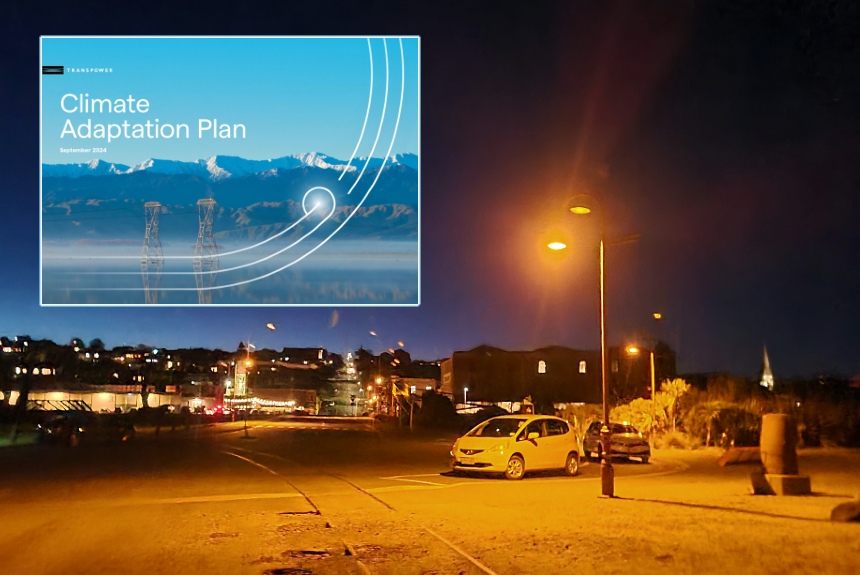The state-owned enterprise Transpower New Zealand Ltd. released its climate adaptation plan in September 2024.
The company’s initial climate adaptation plan aims to enhance the transmission system’s resilience to climate change. It identifies potential climate impacts, adaptation measures, and a five-year action plan.
Transpower New Zealand Limited owns and operates the National Grid, the high-voltage transmission network connecting generation areas with towns and cities nationwide, from the top end of the North Island to the southernmost town of the South Island.

Transpower manages approximately $5 billion of electricity transmission assets, including a high-voltage direct current (HVDC) link between the North and South Islands and an extensive telecommunications network to support our business operations.
The national electricity grid is one of New Zealand’s critical infrastructures. Due to New Zealand’s long and narrow geography exposes it to a broad range of weather-related hazards. The plan develops three climate scenarios based on temperature rises of 1.5°C, 2.5˚°C, and 3.5°C to plan for a range of possible future uncertainties and support decision-making.
Climate change will increase the severity and frequency of climate hazards that could impact the grid, including increasing air temperatures, flooding, sea level rise, land instability caused by landslides, extreme wind, and wildfires.
According to the report, New Zealand’s national grid has been built over the last 100 years. Its oldest substations and lines were built before 1925, and much of the network was built in the 1950s, 1960s, and 1970s.
Using the company’s existing asset management approach, it will adapt to climate change and consider future climate scenarios. An integrated systemic risk-based approach can help to balance safety, reliability, resilience, and affordability.
New Zealand’s demand for electricity is growing from business and household needs. Electrification will be vital to the Government’s target of achieving 50% renewable energy of its total energy needs by 2035 and reaching Net Zero by 2050.
This demand includes electrifying two of the country’s most carbon-intensive sectors: transport and process heat. The report notes that the country’s transmission will grow and expand simultaneously with New Zealand’s demands for electricity to meet these targets.
Transpower’s 5-year climate adaptation plan includes:
- A high-level overview of how it integrates climate adaptation into the company’s asset management approach and decision-making in the context of the wider electricity industry and other critical infrastructure and its regulatory frameworks.
- Climate change impacts the national grid, linking it to the climate change scenarios and Transpower’s climate statement. This first adaptation plan focuses on key physical climate-related risks.
- Adaptation responses. It outlines the PARA framework (Protect, Accommodate, Retreat, Avoid) and other broader adaptation responses to manage the impacts of climate change on the national grid infrastructure.
- Actions for the next five years. This includes integrating climate adaptation into Transpower’s asset management, better understanding climate-related risks and opportunities, connecting and collaborating with stakeholders, and delivering climate resilience and adaptive capacity.
- Implementation planning – how the company will implement, monitor, and report on its progress over the next five years.
Read Transpower’s Climate Adaptation Plan by browsing the links below.
Sources:
Adaptation Plan. Transpower. Retrieved from https://www.transpower.co.nz/about-us/sustainability/adaptation-plan
Climate Adaptation Plan. (2024 September). Transpower. Retrieved from https://static.transpower.co.nz/public/uncontrolled_docs/FINAL%20adaptation%20plan.pdf?VersionId=8jHc0mG6NGJ5QKHhw84WSy2YmTbWQgiK



Leave a Reply